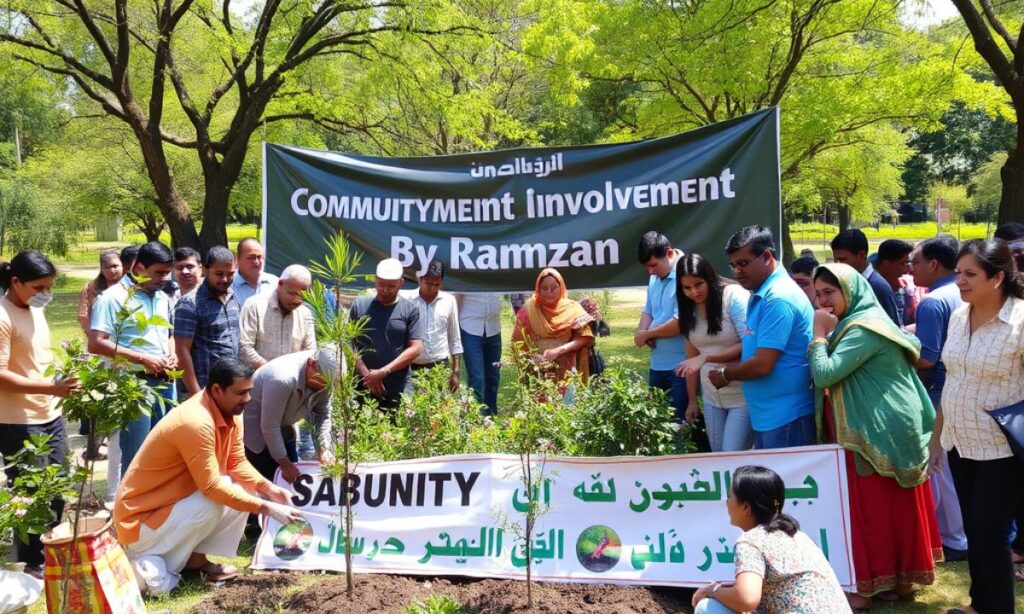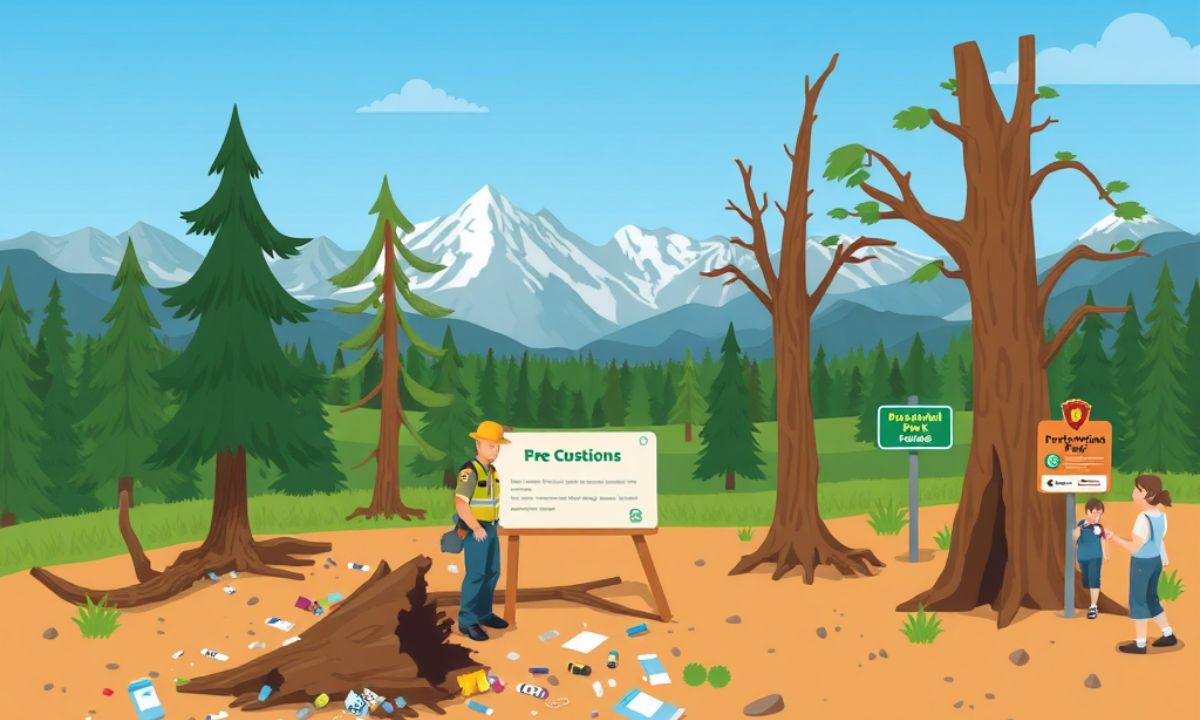The recent fine imposed for damaging Avista National Park has brought national attention to the consequences of environmental negligence. As one of the country’s most treasured natural spaces, the park represents more than just scenic beauty—it embodies our collective responsibility to preserve nature
This incident highlights the urgent need for stronger preventive measures, public awareness, and accountability to ensure such acts are not repeated, protecting the park for generations to come.
What Happened at Avista National Park?
In 2017, Avista Corporation carried out unpermitted land alterations at Lake Roosevelt National Recreation Area—part of the broader Avista National Park territory. The company moved a power pole using off‑road vehicles, which damaged protected natural resources including around 70 big sagebrush shrubs and 29 ponderosa pine trees. The disturbance also impacted native grasses and fragile archaeological features.
This prompted the National Park Service and the Department of the Interior to investigate, ultimately leading to a proposed $900,000 fine against Avista for environmental and cultural resource violations euro.dayfr.com+3awbi.org+3freedomtriumph.com+3.
Why Do Parks Impose Fines for Damages?
Parks use fines as a deterrent against behaviors that harm ecosystems, wildlife, and cultural heritage. Beyond just punishing offenders, these penalties serve multiple critical functions: discouraging future violations, funding restoration projects, and reinforcing a message of accountability.
In many cases, the revenue from fines is directly reinvested into conservation efforts—such as habitat restoration, trail maintenance, and ranger patrols. This aligns with broader conservation finance strategies, where fines are seen as “economic punishment” to prevent future environmental harm . Moreover, in Avista’s case, robust enforcement is meant to signal to other corporations the serious consequences of bypassing regulations in protected areas
Protecting the Ecosystem and Wildlife
Fines for park damage play a crucial role in safeguarding delicate ecosystems and wildlife habitats. By penalizing harmful actions, authorities help prevent long-term disruptions to biodiversity and ensure that plants and animals can thrive in their natural environments without human interference.
Deterring Irresponsible Behavior
Imposing fines acts as a strong deterrent against careless or illegal behavior within protected areas. When people or organizations face real consequences for their actions, they are more likely to think twice before causing harm, encouraging responsible conduct in natural spaces.
Funding Conservation Efforts
The revenue collected from environmental fines is often reinvested into conservation programs. These funds support restoration projects, maintenance of trails, habitat recovery, and public education initiatives, helping to preserve the park’s beauty and health for future generations.
The Fine Imposed on the Offender
In response to the unauthorized damage caused within Avista National Park, a significant fine was levied against the responsible party. The penalty, reportedly amounting to $900,000, was meant to address the environmental degradation and hold the offender accountable.
This fine reflects the seriousness of violating federal protections in designated natural areas and sends a strong message about the importance of compliance with conservation laws.
Financial and Environmental Impact
The consequences of the incident were both financial and ecological. Not only did the offending company face a hefty monetary penalty, but the damage to the park’s native vegetation, including sagebrush and pine trees, disrupted the local ecosystem.
Such destruction can take years to reverse and often requires costly restoration efforts. Additionally, the incident jeopardized fragile archaeological features, compounding the long-term impact on the park’s natural and cultural heritage.
Public Reaction to the Incident
| Group | Reaction |
| Environmental Activists | Strongly condemned the damage and demanded stricter protections. |
| Local Communities | Expressed concern over loss of natural beauty and cultural heritage. |
| Tourists & Visitors | Shared disappointment and called for accountability and better monitoring. |
| Government Officials | Emphasized the need for strict enforcement and restoration efforts. |
| General Public (Online) | Mixed reactions—some angry, others unaware until media coverage spread. |
The damage to Avista National Park sparked widespread concern and criticism. Environmental groups were vocal in demanding tougher laws to prevent similar incidents, while local residents feared the lasting impact on their cherished landscape. Tourists and nature lovers expressed disappointment, emphasizing the need for responsible stewardship. The incident also sparked discussions online, where public opinion ranged from outrage to calls for increased awareness and education.
How Such Incidents Can Be Prevented
- Implement stricter penalties for environmental violations.
- Increase ranger patrols and surveillance in protected areas.
- Enforce mandatory permits for any land-related activities.
- Monitor corporate activities near parks more closely.
- Establish clear legal consequences for negligent actions.
The Role of Park Authorities
| Responsibility | Description |
| Enforcement of Regulations | Ensure laws and rules are followed by visitors, companies, and contractors. |
| Monitoring and Surveillance | Regularly patrol and use technology to detect unauthorized or harmful activities. |
| Public Education | Educate visitors and local communities about conservation and park guidelines. |
| Restoration Efforts | Lead ecological recovery efforts after environmental damage occurs. |
| Permit Management | Review and issue permits for legal activities within park boundaries. |
| Collaboration with Agencies | Work with environmental, legal, and governmental bodies to uphold protections. |
| Emergency Response | Quickly respond to environmental threats, accidents, or unauthorized actions. |
| Community Engagement | Involve local populations in conservation projects and volunteer programs. |
Community Involvement in Conservation

Community involvement plays a vital role in the success of conservation efforts, especially in areas like Avista National Park. When local residents, volunteers, and organizations actively participate in protecting natural resources, it fosters a sense of shared responsibility and pride.
Whether through clean-up drives, educational workshops, or citizen reporting of violations, community actions help bridge the gap between policy and practice. Involving the public not only strengthens monitoring efforts but also builds long-term support for sustainable environmental practices. Ultimately, empowered communities become the strongest allies in preserving nature for future generations.
Learning from Past Incidents
| Aspect | Lesson Learned |
| Policy Weaknesses | Revealed gaps in existing laws or enforcement that need to be strengthened. |
| Need for Oversight | Showed the importance of close monitoring of corporate and public activities. |
| Public Awareness Gaps | Highlighted the need for better education on rules and environmental impact. |
| Response Preparedness | Stressed the value of having swift response protocols for damage or violations. |
| Restoration Planning | Encouraged more effective, long-term strategies for environmental recovery. |
| Community Engagement | Proved that involving locals improves prevention and detection of issues. |
| Technology Use | Showed how tools like surveillance cameras or sensors can aid in early detection. |
| Accountability Measures | Emphasized the need for clear accountability for all parties involved. |
Importance of Protecting Natural Heritage
Preserving Biodiversity and Ecosystems
Purpose: Safeguarding natural heritage ensures that diverse species of plants and animals can thrive, maintaining the balance of delicate ecosystems that support life on Earth.
Passing it to Future Generations
Purpose: Protecting natural heritage allows future generations to experience the beauty, history, and environmental value of untouched landscapes, fostering a deeper respect for nature and sustainability.
Community Involvement in Conservation – By Ramzan

Community involvement is a cornerstone of effective conservation, especially in protected areas like Avista National Park. When local people take an active role—through clean-up campaigns, wildlife monitoring, and environmental education—they help create a culture of stewardship. Their efforts not only supplement official measures but also bring unique local knowledge and passion to preservation work.
By engaging schools, volunteers, and neighborhood groups, communities can become powerful allies in protecting natural habitats and preventing future damage. Ultimately, conservation becomes stronger and more sustainable when it’s driven by the people who live closest to the land.
Encouraging Responsible Tourism
Promoting responsible tourism is essential to preserving natural parks like Avista. By educating visitors on eco-friendly practices—such as staying on marked trails, respecting wildlife, and properly disposing of waste—parks can reduce human impact on fragile ecosystems. Responsible tourism not only protects the environment but also ensures that future visitors can enjoy the same unspoiled beauty.
Steps Taken After the Incident
| Step | Implementation | Timeline |
| 1. Fine Imposed on Offender | A $900,000 fine was levied after a detailed investigation confirmed environmental damage by Avista Corporation. | Within 1 month of the incident |
| 2. Restoration Plan Initiated | Park authorities began replanting native species and stabilizing damaged areas with help from environmental experts. | 1–3 months post-incident |
| 3. Educational Campaign Launched | A public awareness campaign was rolled out to educate visitors and companies on park rules and the importance of conservation. | 3–4 months after the incident |
FAQ’s
Why was a fine imposed at Avista National Park?
A fine was imposed to hold the offender accountable for unauthorized environmental damage and cultural site disruption.
How are damage fines calculated in national parks?
Fines are based on the extent of ecological, cultural, and structural harm, including restoration and legal costs.
What measures can visitors take to prevent damage to parks?
Visitors can follow park rules, stay on designated trails, avoid disturbing wildlife, and dispose of waste responsibly.
Can fines be contested legally?
Yes, fines can be challenged through legal appeals if the accused party believes the penalty is unjustified.
What are the benefits of volunteering for national park conservation?
Volunteering helps protect nature, builds community connections, and offers valuable learning and outdoor experiences.
Conclusion
The Avista National Park damage incident serves as a powerful reminder of the importance of environmental responsibility and legal accountability. The fine imposed not only addresses the harm done but also reinforces the need for stricter enforcement, public awareness, and proactive conservation efforts.
Through education, stronger policies, and community involvement, such incidents can be prevented in the future—ensuring that our natural heritage remains protected for generations to come.

